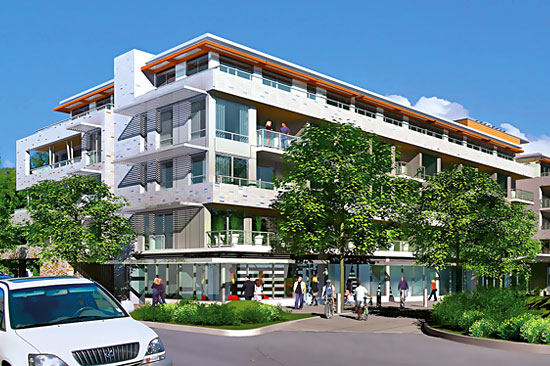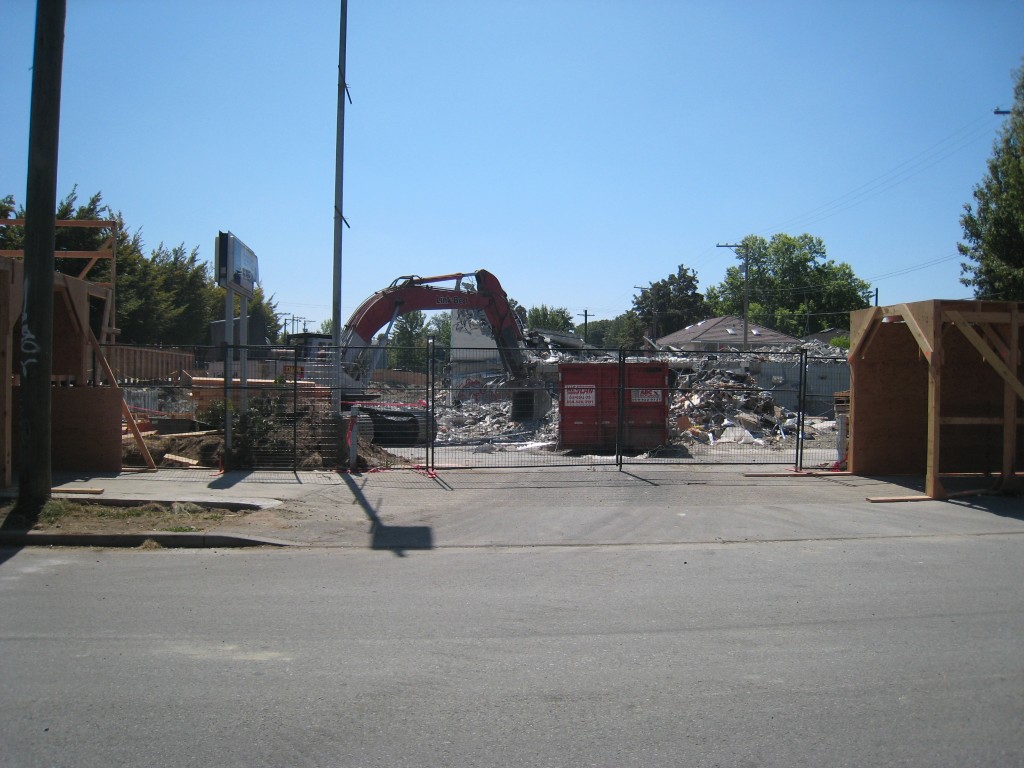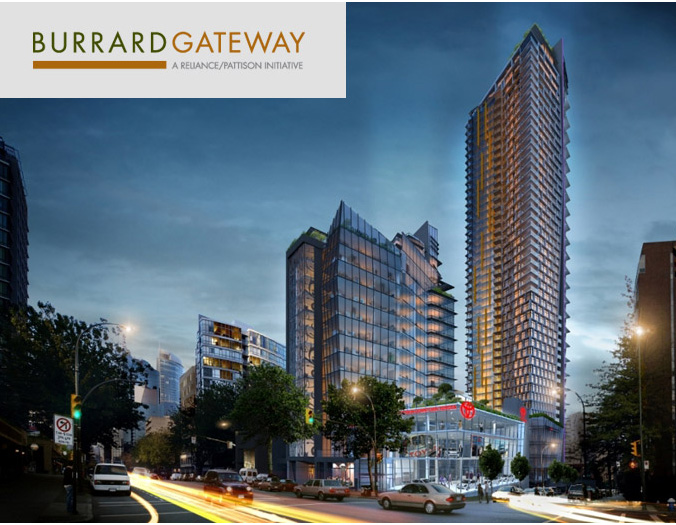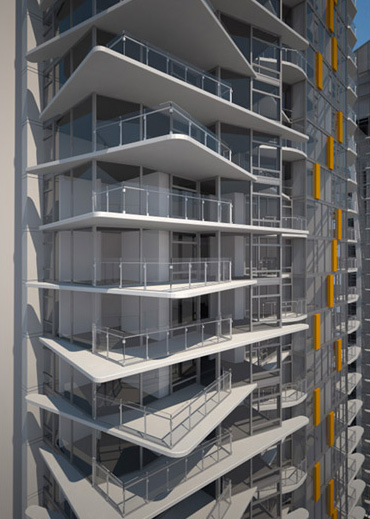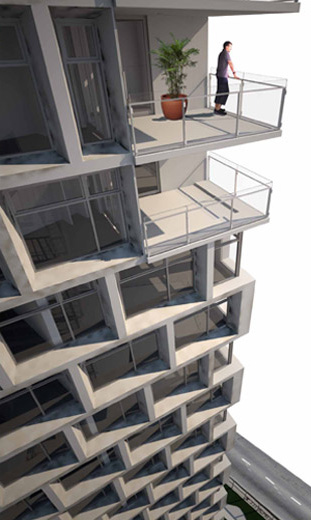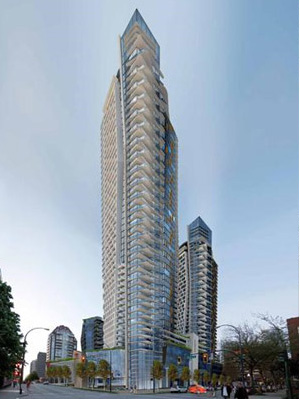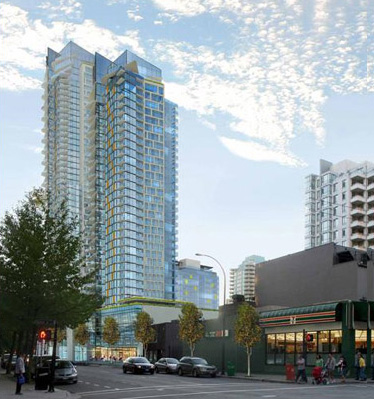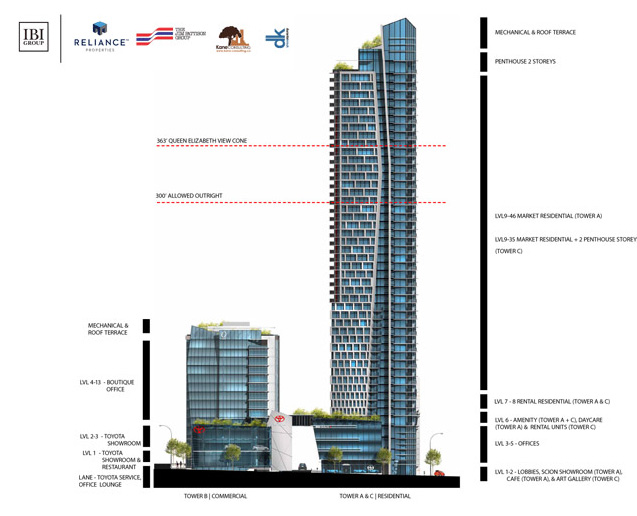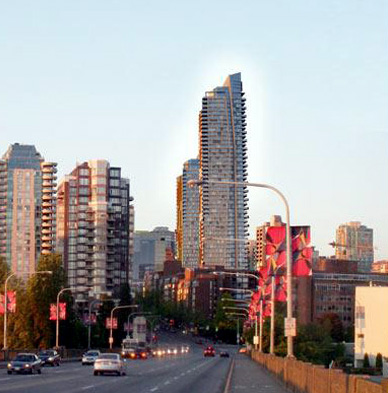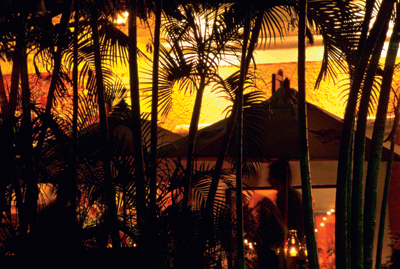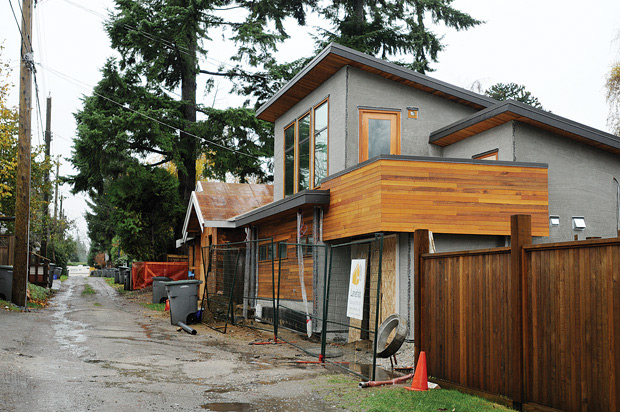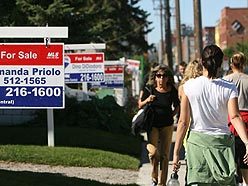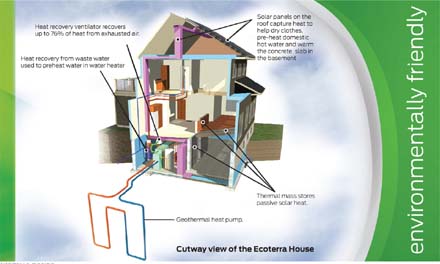Proposed Burrard Gateway Vancouver Real Estate Development
Other
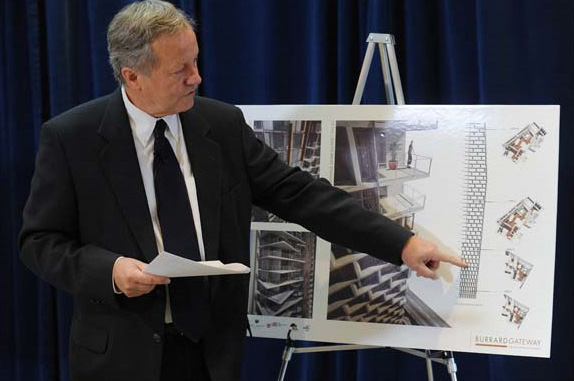
Jim Hancock, architect, at an announcement for a proposed $500-million high-rise building development called Burrard Gateway that would encompass the 1200-block Burrard and 1200-block Hornby Streets, in Vancouver On Tuesday, Oct. 26, 2010
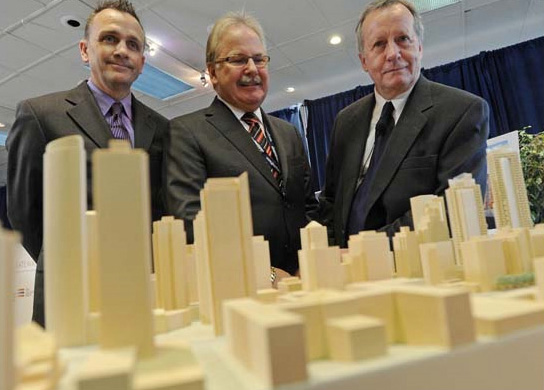
Left to right: Jon Stovell, president of Reliance Properties, Bill Harbottle, president of the Jum Pattison Auto Group, and Jim Hancock, architect, look over the model of a %500-million high-rise building development called Burrard Gateway that would encompass the 1200-block Burrard and 1200-block Hornby streets, in Vancouver on Tueday Oct. 26, 2010. Photgraph by ; Jason Payne, PNG
Multiple new Vancouver high-rise condo towers may be on the go as the proposed Burrard Gateway real estate development project reaches the city proposal stage. A joint effort between Reliance Properties and Jim Pattison Group may see the development of three large Vancouver high-rise condo towers in what may become the largest project the city has ever seen. Named the Burrard Gateway Vancouver real estate proposal, Jim Pattison and Reliance Properties hopes to redevelop this part of town with a $500 million proposal constructed near the north end of the Burrard Bridge in downtown Vancouver. As the City of Vancouver mulls over height restrictions, the proposed Burrard Gateway Vancouver real estate development proposal makes its mark with at least 3 condominium towers that will change the skyline forever. One of these proposed Vancouver Burrard Gateway condo towers may be 48 storeys, either matching or even exceeding the current downtown height restrictions for residential high-rises. The Burrard Bridge north end project site where the Vancouver Burrard Gateway proposal is, is actually 1 of 6 different development sites in which the City of Vancouver is considering changing the height restrictions for specific developments and proposals. An artists’ rendering of the proposed 48 storey Burrard Gateway Vancouver condo high-rise was released as well and it is striking and very beautiful.
Some Initial Information about the Vancouver Burrard Gateway Proposal
• 23 city lot project site at north end of Burrard Bridge
• One of largest downtown Vancouver real estate development proposals
• Official name is Burrard Gateway Building Project
• Joint collaboration between Reliance Properties & Jim Pattison Group
• Proposal includes 37 storey and 48 storey residential Burrard Gateway Vancouver condo towers
• The Vancouver Burrard Gateway condo towers will house a wide range of suites and price points focussed on affordability and sustainability totally about 600 suites for sale
• Burrard Gateway Vancouver condos will be designed to LEED Gold status
• Also includes 13 storey office high-rise building with 7 storey podium (residential/commercial)
• Mixed use Vancouver Burrard Gateway project will have residential, rental housing, retail and commercial
• 50,000 sq ft 3 storey Toyota dealership
• Burrard Gateway community amenities may include a 5,200 sf daycare centre, car-share program, 800 bike parking, community gallery space
• If passed, construction may start in next 1.5 years (requires rezoning)
• The 48 storey Burrard Gateway Vancouver condo tower will exceed current city height restrictions of 466 feet
• Architect is Jim Hancock of IBI/HB LArchitects for this striking downtown Vancouver condo high-rise
• The project has been in discussion for almost 3 years
• Construction timeline is 4 years; total space is 750,000 square feet
Update on Burrard Gateway Vancouver Proposal – October 26, 2010
Jim Pattison Developments Ltd. And Reliance Properties Ltd. are submitting a rezoning application to the City of Vancouver for a proposed mixed use downtown Vancouver real estate development. One of the largest single projects currently under consideration in Downtown Vancouver, the Burrard Gateway development would see the creation of a significant gateway project on the Burrard Street corridor. Here is some basic information:
The project address with be at 1290 Burrard Street Vancouver and 1281 Hornby Street Vancouver in downtown. The site area is approximately 69,000 square feet and the dimensions are north parcel (225’ along Burrard by 120’ along Drake) and the south parcel (350’ along Hornby by 120’ along Drake). The location of Burrard Gateway proposal is at the northeast corner of Burrard and Drake Streets at the entrance of Vancouver downtown’s core.
The permitted heights of Tower A at Burrard Gateway Vancouver is 364’ but the project target is 466’ while Tower B permitted height is 300’ and the target is 184’. Tower C at Burrard Gateway proposal has a projected target height of 355’ with a permitted height of 360’. The current permitted FSR for the downtown Vancouver Burrard Gateway real estate development site is 5.5 and Jim Pattison Development Ltd and Reliance Properties Ltd is seeking 11.22 FSR.
The mixed use development will see the implementation of residential, commercial and amenity spaces. The breakdown for the projected proposed Burrard Gateway Vancouver gross area breakdown is as follows:
– Burrard Gateway Towers A & C will have 55,096 sf of rental residential and 491,775 sf of market residential in addition to 3,357 retail commercial and 98,444 sf office commercial. The amenity space will include 5,175 sf daycare facility and 12,061 sf other onsite residential building amenities.
– Burrard Gateway Tower B will have no residential units but will have 40,053 sf of retail commercial and 106,015 sf of office commercial.
– Tower A will have 44 rental units and 276 market units
– Tower C will have 35 rental units and 234 market units
The proposed community benefits of Burrard Gateway Vancouver real estate development proposal includes the following:
– Increased Child Care facilities and services
– Job Creation in the Downtown Vancouver’s Core
– Use of Heritage Density Bank (70,000 sf)
– Support the Downtown Eastside Housing Plan (affordable rentals)
– Payment of Development Cost Levy
– Showcase of Sustainable Design and Technology (LEED Gold Status)
– Significant Car Share Program (with Toyota vehicles)
– More Downtown Vancouver Rental Housing (79 new units)
– Community Gallery (to promote local arts and culture)
– Open and Active Public Realm at Grade (with retail, galleries, water feature etc)
The Downtown Vancouver Burrard Gateway Building Project Proposal
New Vancouver skyscrapers may be on their way if the Burrard Gateway Building Project proposal is passed by city hall in the next year. This mega Vancouver real estate development could even break ground early next year if the city likes what they see in the proposal. Costing about $500 million, the join effort between Reliance Properties and Jim Pattison Group will see the development of at least three high-rise Vancouver condo towers at the Burrard Gateway Building Project site which is located at the north end of the Burrard Bridge. The entire project site actually spans an amazing twenty three (23) city lots near Hornby, Drake and Burrard Streets. This master planned Downtown Vancouver Burrard Gateway Building Project proposal is for a mixed use neighbourhood complete with commercial, retail and residential space. According to MetroNews Vancouver and the Vancouver Sun, if all goes well with the proposal stage, the Burrard Gateway Vancouver real estate development may even start in the next 1½ years. The 23 city lot project requires rezoning by the city in order to move forward. The public hearing may be advanced by Spring 2011, allowing residents and all parties to voice their opinion to the City of Vancouver. City Council will take all opinions and concerns regarding everything from increased traffic, parking, rezoning, residential units, commercial space etc into account before moving forward. In addition, the downtown Vancouver Burrard Gateway Building Project will ask for Vancouver condo high-rise towers that exceed current height restrictions in the area. Currently, the downtown Vancouver height restriction is 466 feet, and the proposed Burrard Gateway condo tower will be 48 storeys, which is above the 466 ft restriction. As Burrard Bridge is a gateway in and out of the downtown core, the high-rise tower will provide a great landmark building when entering the community. The architect, Jim Hancock explains that this is a great gateway project for the downtown Vancouver neighbourhood. If approved in 2011, the Downtown Vancouver Burrard Gateway building project will take 4 years for construction, with an estimated completion date around 2015 to 2016. The presales Vancouver condos at Burrard Gateway condominium towers will begin a year or so before the completion date and will launch a wide variety of floorplans catered towards sustainability, functionality and affordability.
Here are some highlighted points from the recent Vancouver Sun and MetroNews Vancouver press releases regarding the proposed Vancouver real estate development at Burrard Gateway Building Project. A landmark $500 million master planned neighbourhood is being proposed to City Council for the development of the north end of Burrard Street Bridge. A combination of residential and commercial towers will be incorporated in addition to a podium. The joint effort for the proposed Vancouver Burrard Gateway development is between Jim Pattison Group and Reliance Properties. The tallest proposed Burrard Gateway Vancouver condo tower will be 48 storeys and will exceed the current city height restriction of 466 feet by about 102 feet. As 1 of 6 sites that the City Council is considering highrises exceeding the height restriction, the Burrard Gateway Vancouver condo tower may be passed. The 23 city lot development will have over 770,000 square feet of space and will dramatic change the north end of Burrard Street Bridge in downtown Vancouver real estate district in the upcoming years. The rezoning will need to take place and a public hearing Burrard Gateway Vancouver development may start in the spring of 2011. If the hearings and rezoning go smoothly, the Burrard Gateway development may even be complete as early as 2014, but more likely in 2015 to 2016. The 23 city lots that make up this project site are split up as 9 owned by Jim Pattison Developments and 14 owned by Reliance Properties. The entire project is made up of three towers of 13, 36 and 48 storeys in height. The taller two Burrard Gateway Vancouver towers will be residential while the 13 storey tower will be commercial. There will be a 7 storey podium with commercial and residential space. On site, the Burrard Gateway Development will also feature a Toyota Dealership, new daycare, car share co-op program, parking for 800 bikes, community gallery space and money for rental housing for the Downtown Eastside. The 600 residential units here at Vancouver Burrard Gateway condos will have LEED gold status. The architect is IBI/HB Architects and the project site ecompasses the 1200-block Burrard Street and 1200-block Hornby Streets in Downtown Vancouver real estate market.
For more information visit www.relianceproperties.ca or www.jimpattison.com. The Burrard Gateway Proposal follows another large redevelopment called the Vancouver Marine Gateway Proposal at Marine Drive and Cambie Street.
The Urban Design Concepts of Vancouver’s Burrard Gateway Real Estate Development Proposal
The Burrard Bridge enters downtown Vancouver askew to the regular angle of the downtown street grid. The urban design concept of Burrard Gateway Vancouver is to locate a landmark higher building at an axial view from the Burrard Street Bridge approach, an alignment that carries significant visual power and allows the landmark to anchor the entrance into the downtown core. The proposed changes for the proposed Burrard Gateway Vancouver real estate development: Allow consideration for a single higher building of generally 500’ at the Downtown Toyota site (1290 Burrard Street) to mark the axial view from the bridge arrival and to stand out as the dominant landmark in addition to allowing consideration of slightly increased height beyond existing policy heights for other sites along Burrard Street without diminishing the strength of the axial view.
